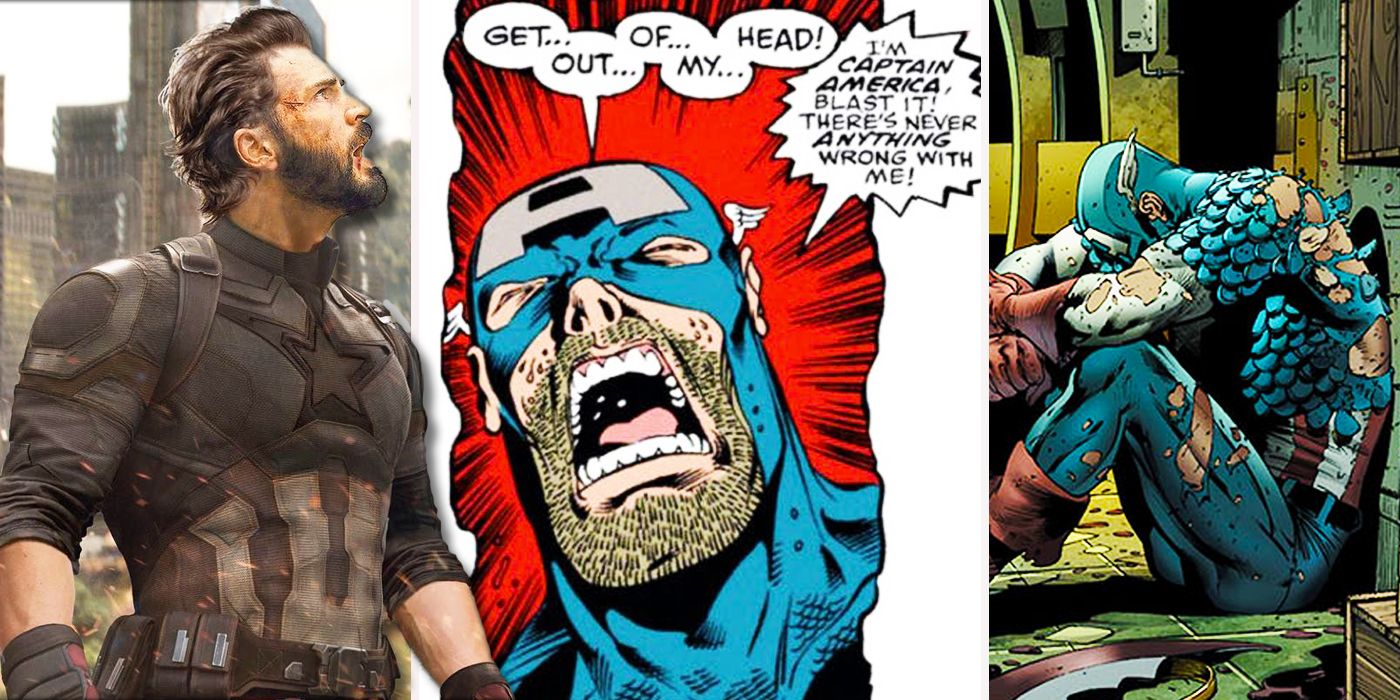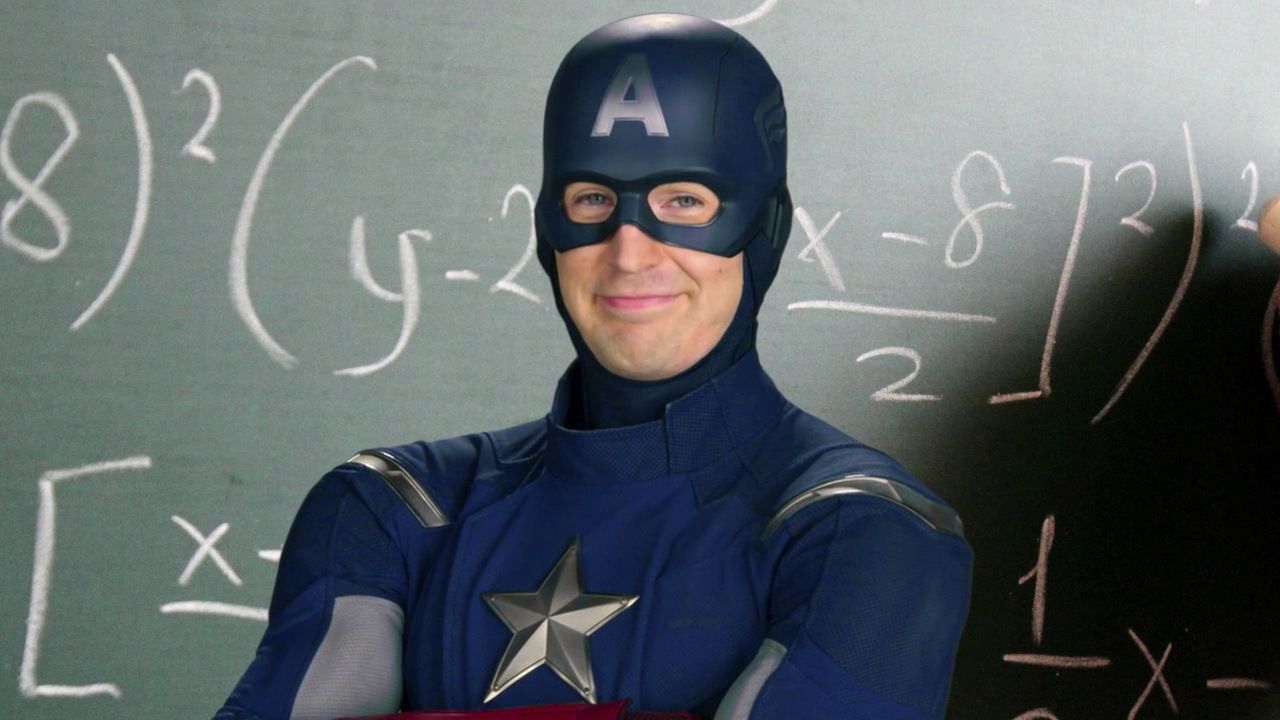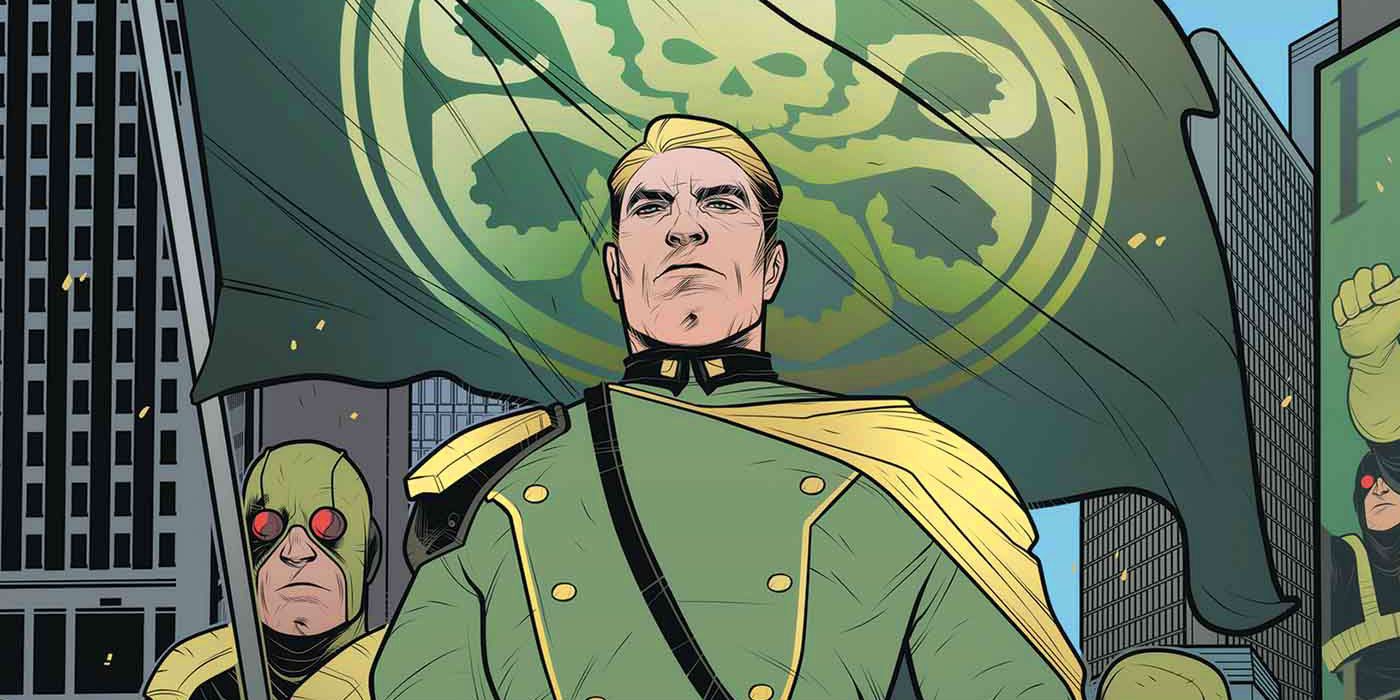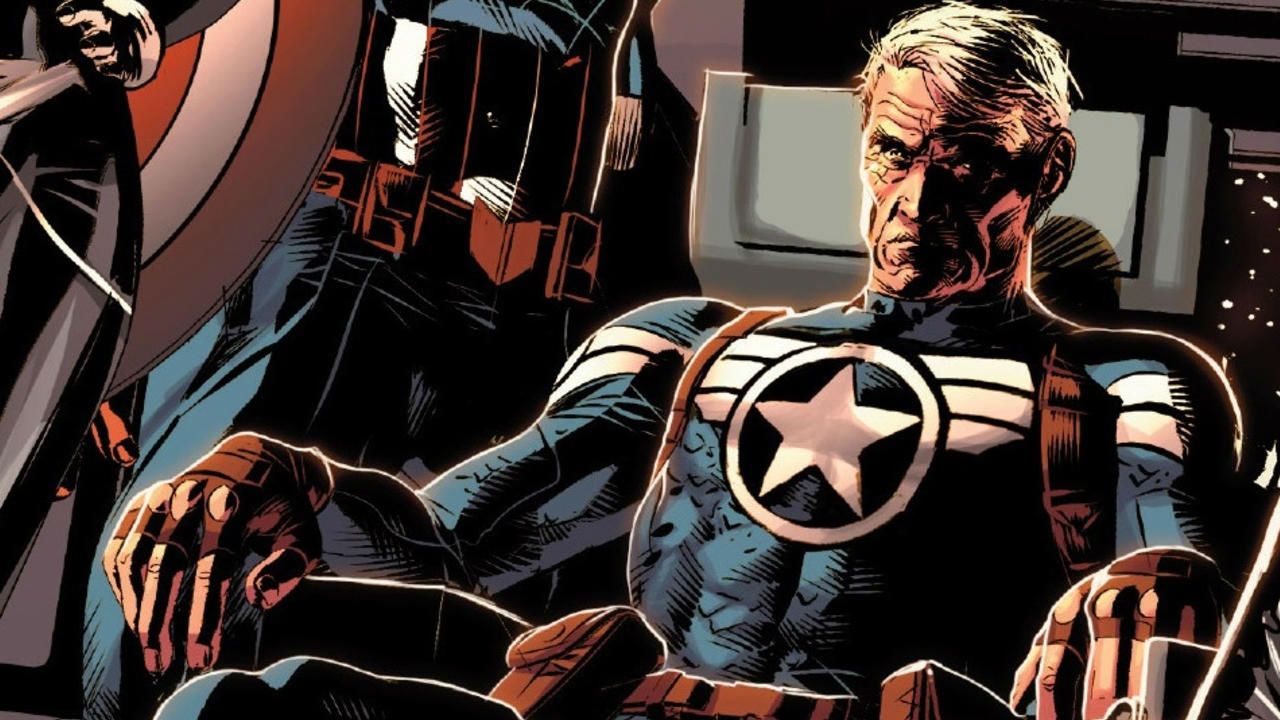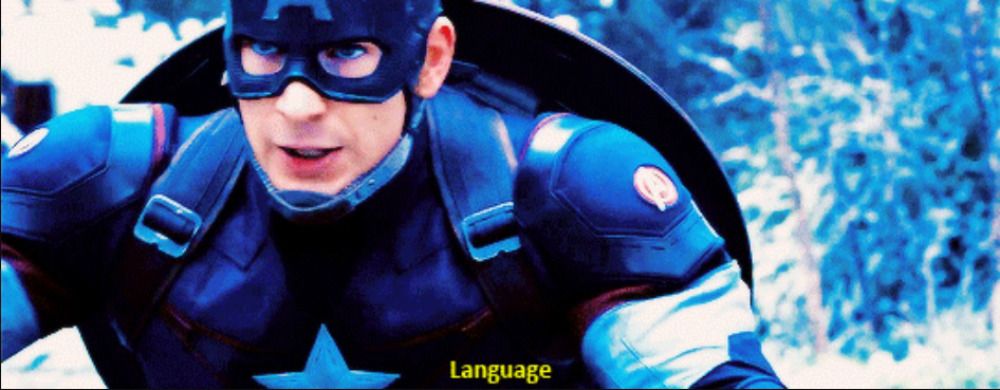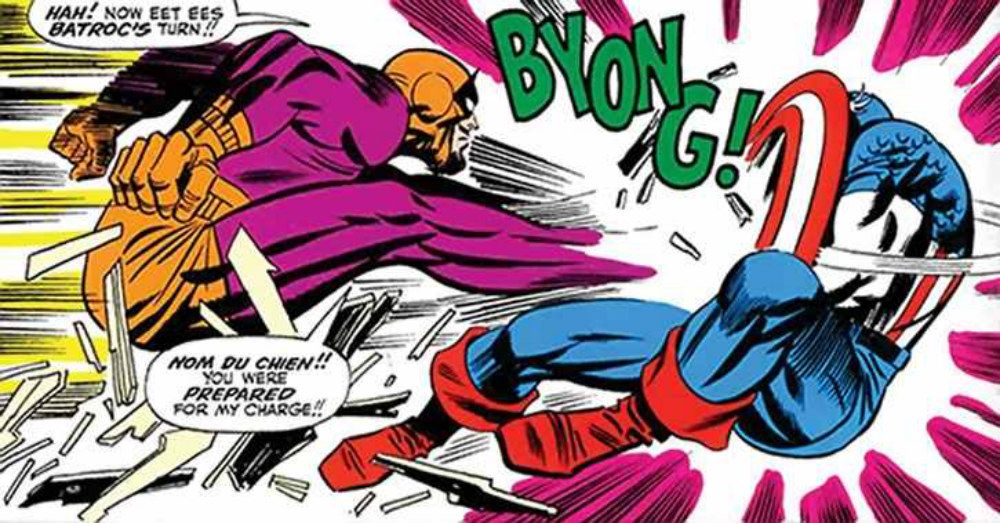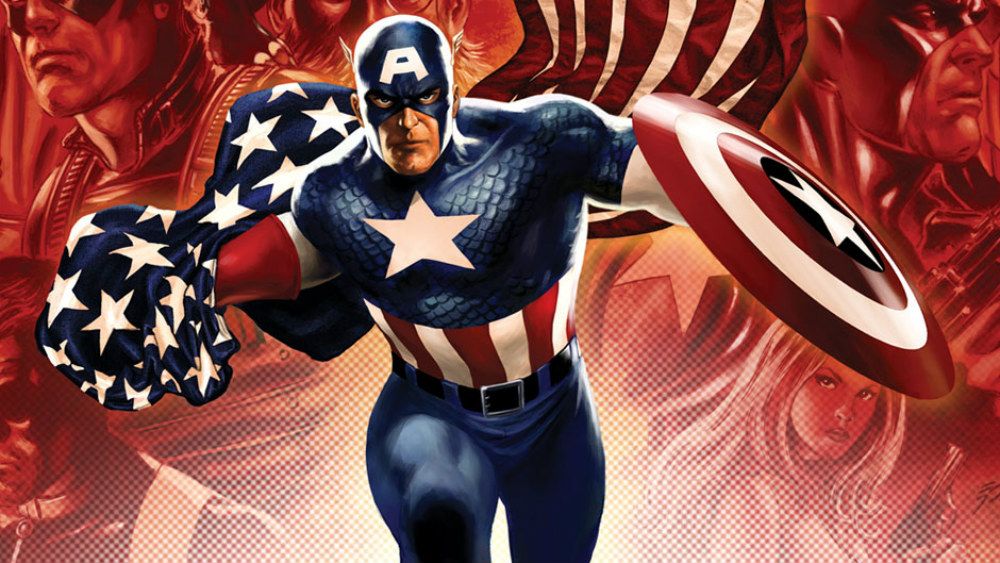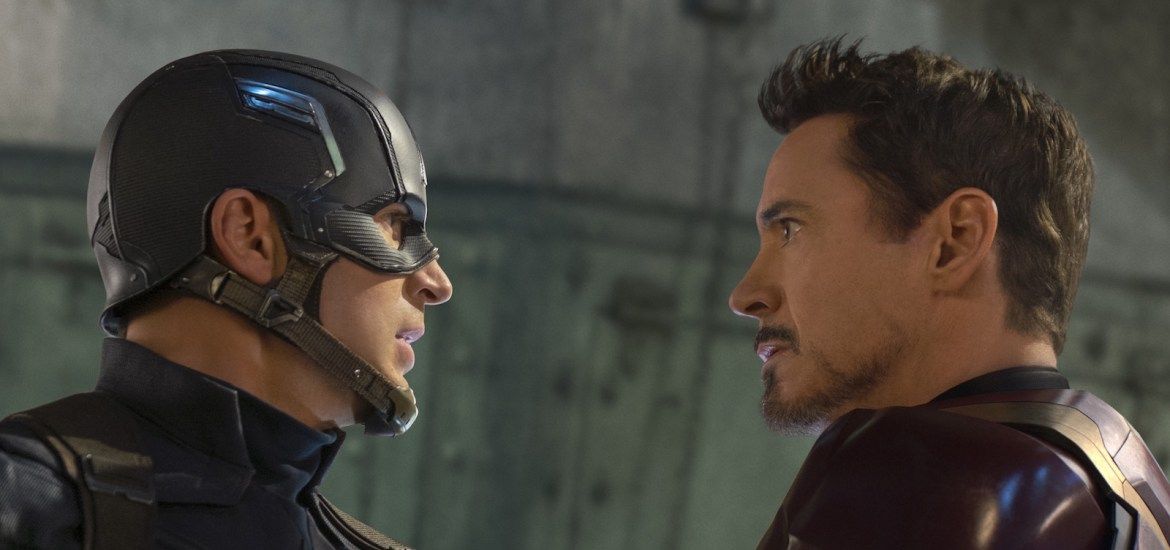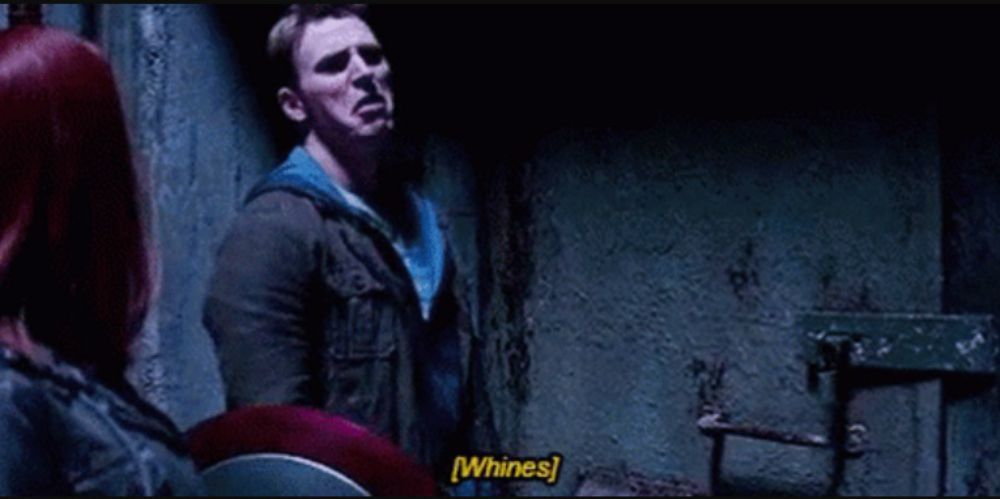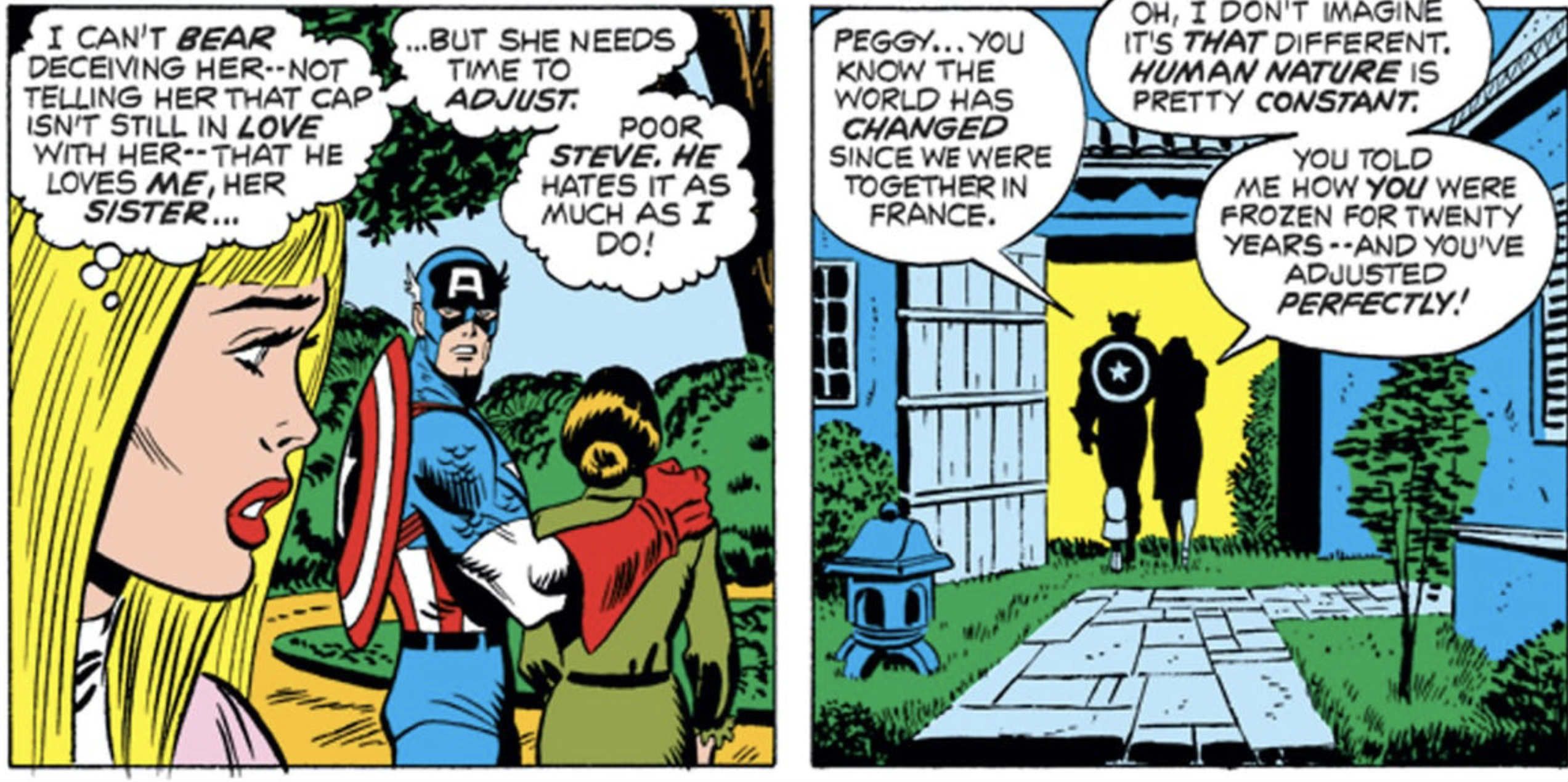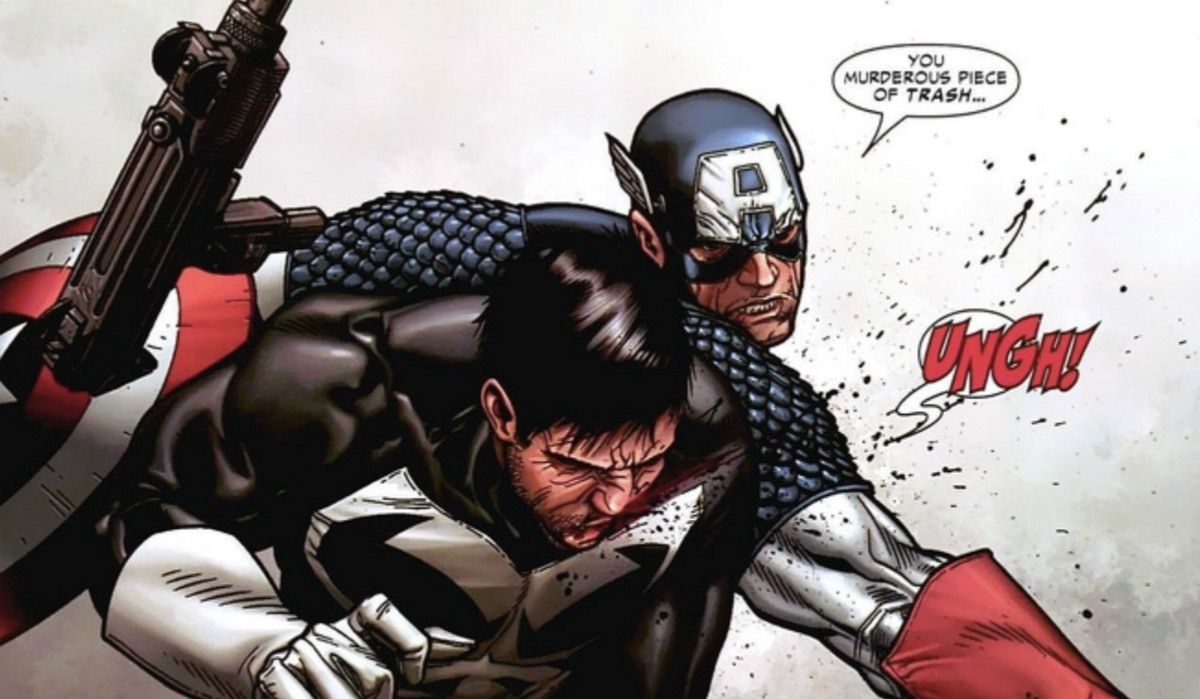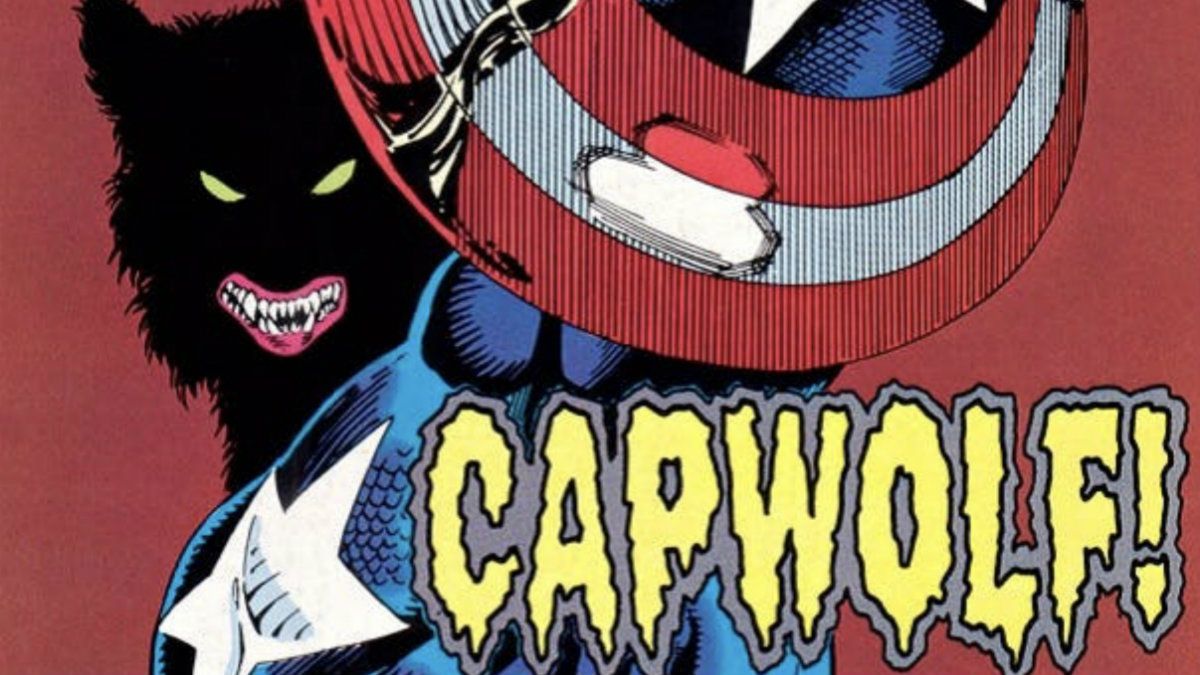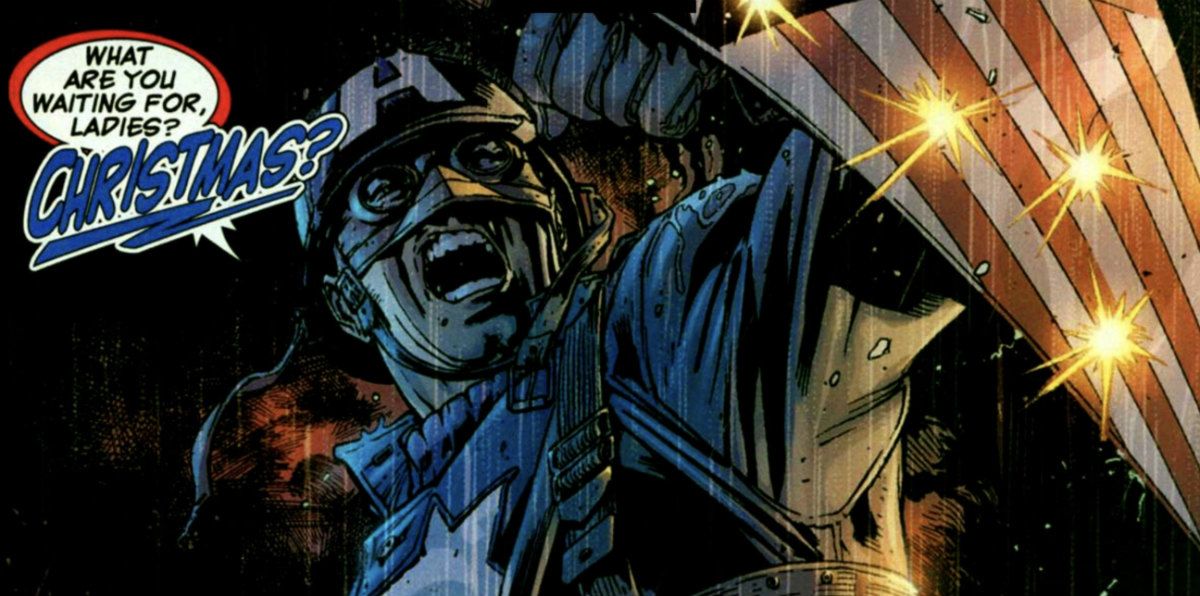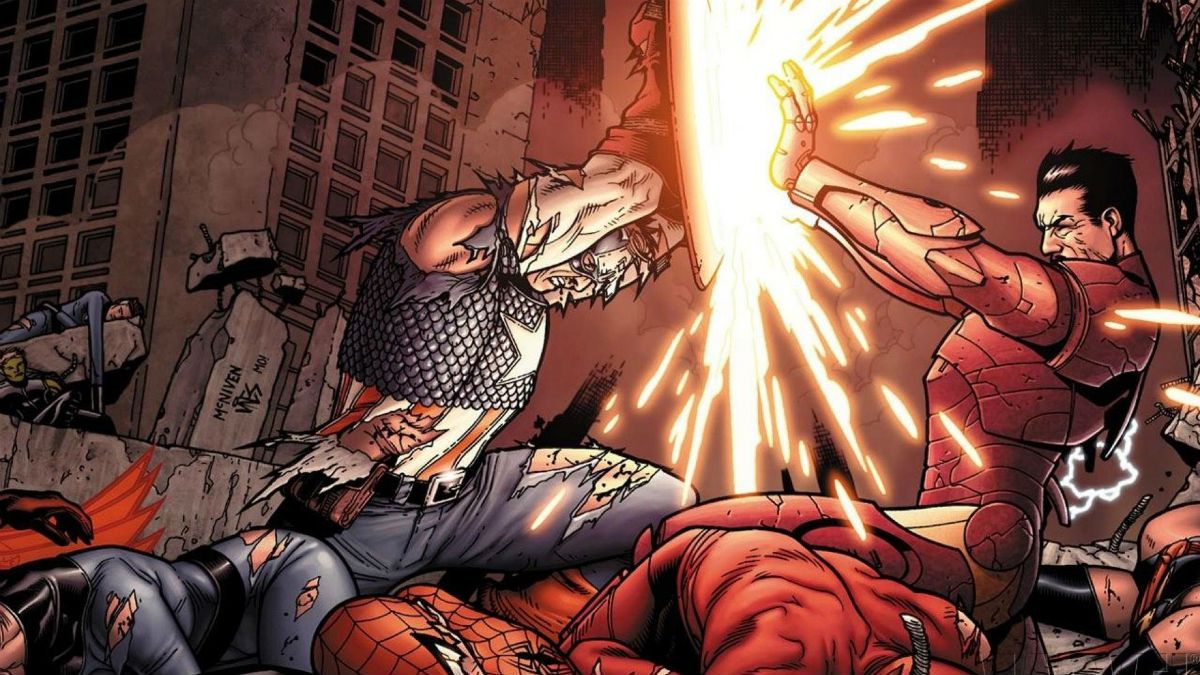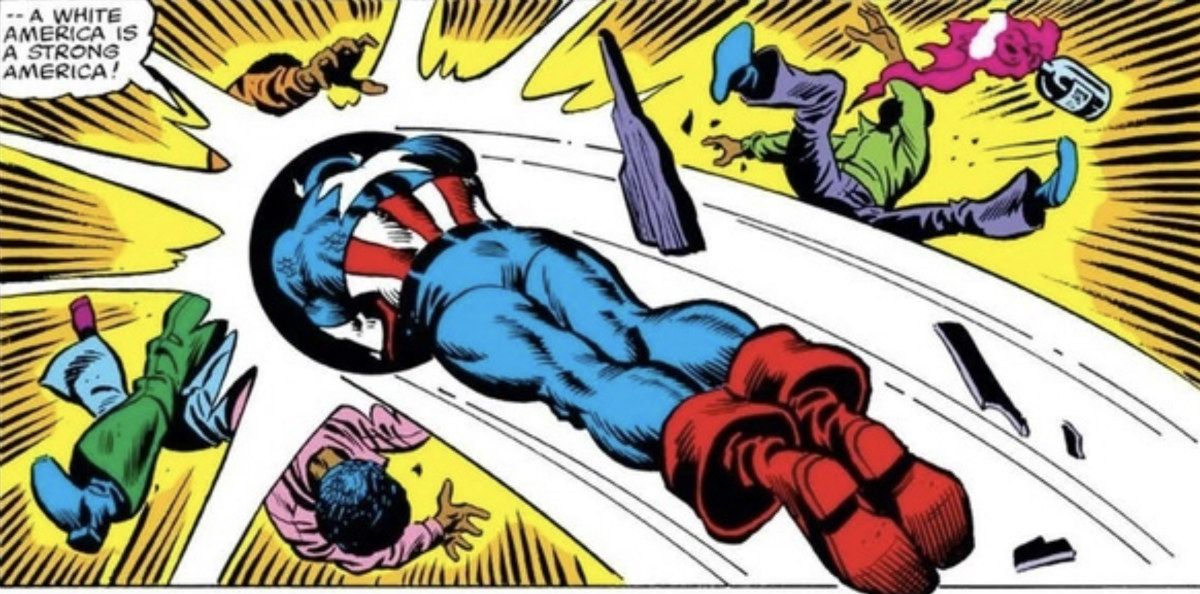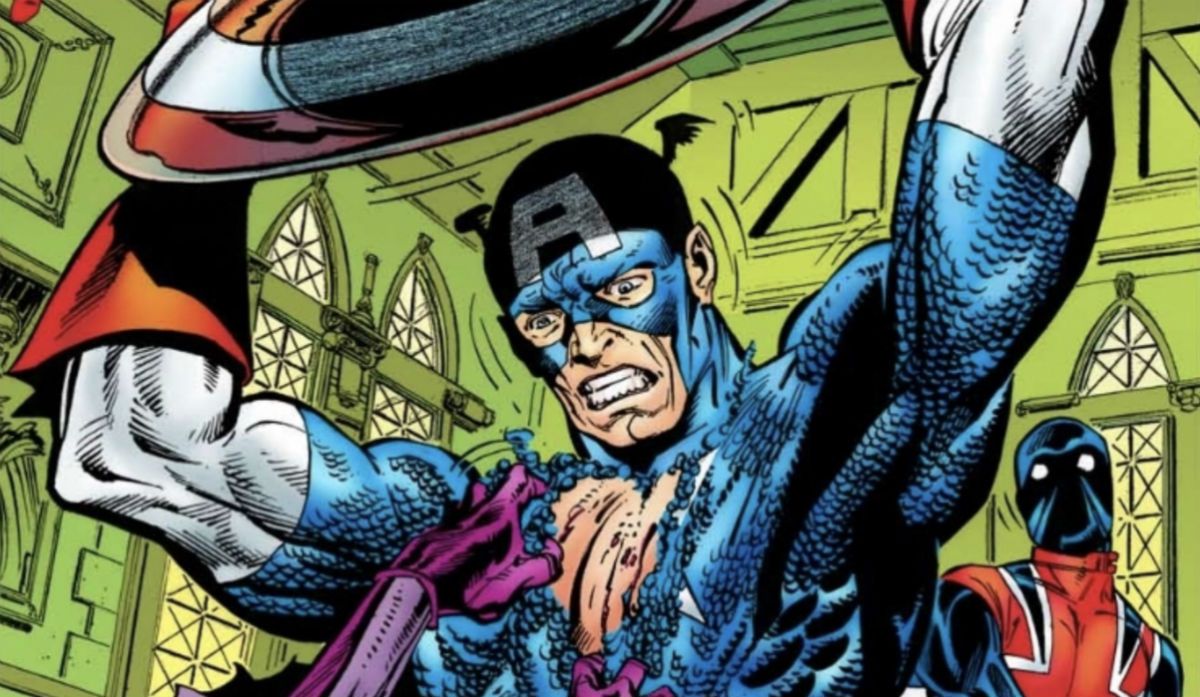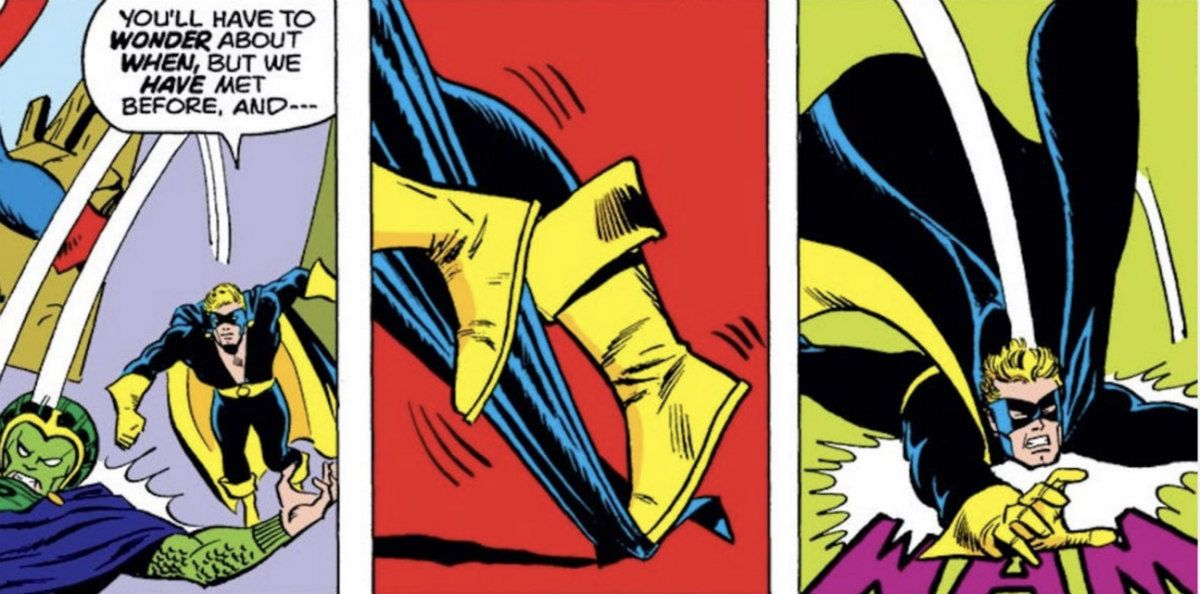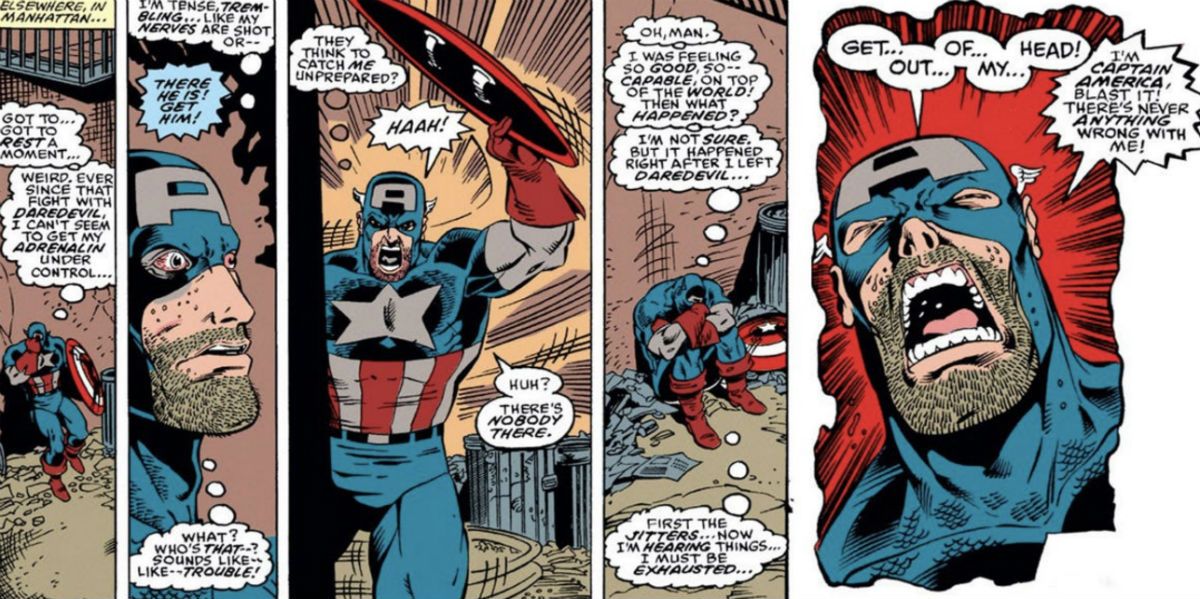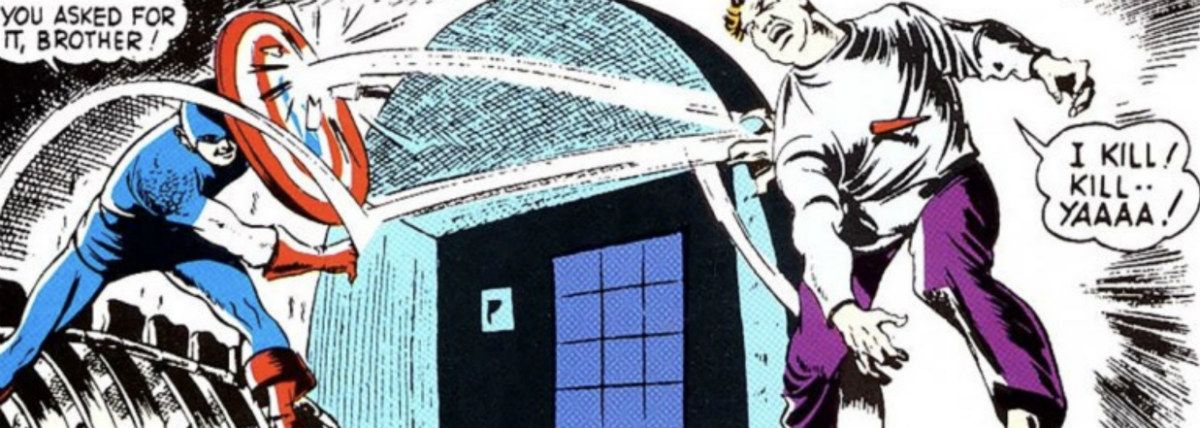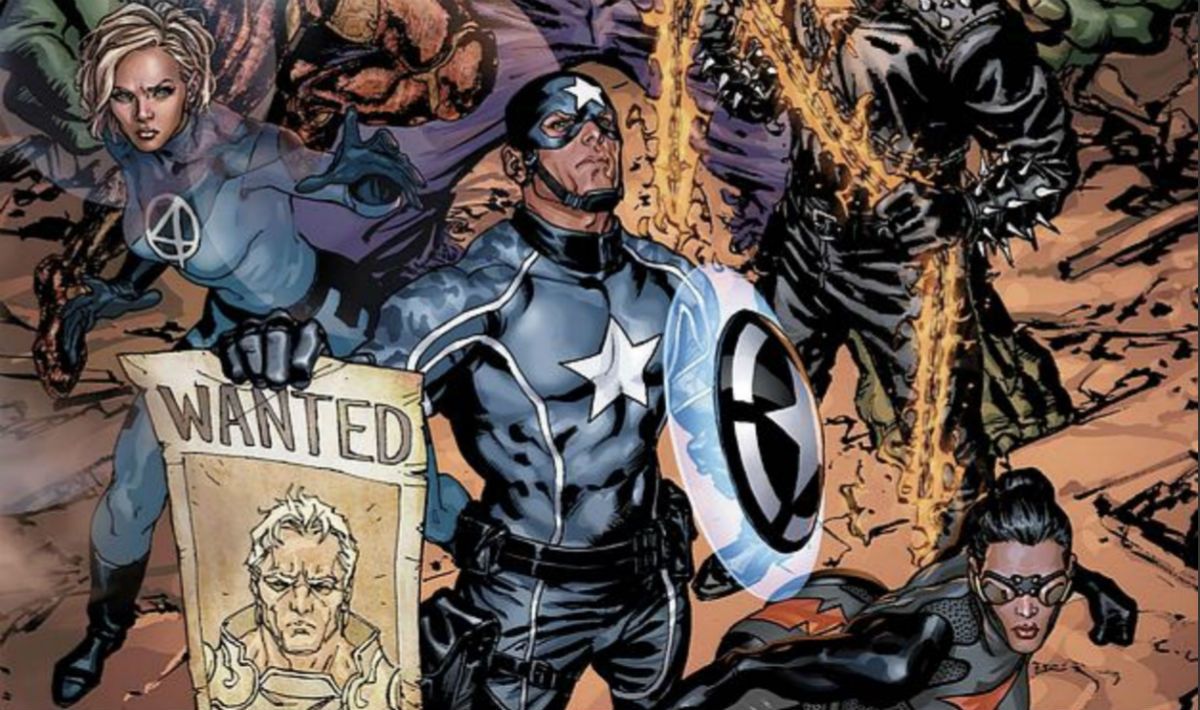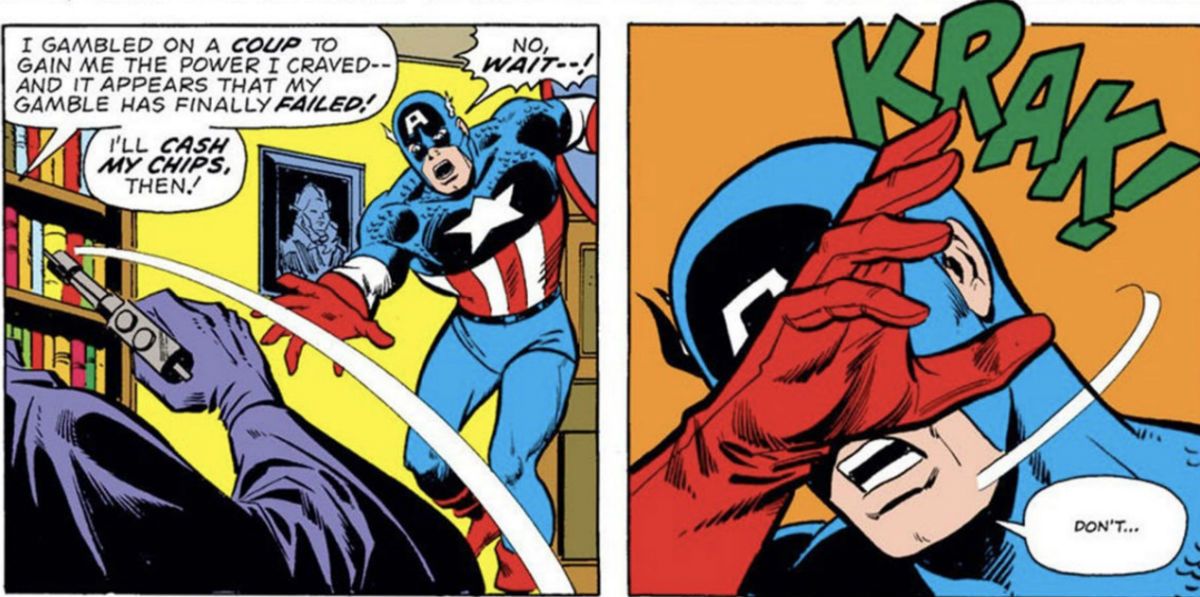Ever since his arrival in the Marvel Cinematic Universe in 2011’s The First Avenger, Captain America’s star has never been higher. He’s had the best trilogy that Marvel Studios has produced so far, and he’s fast become the heart and soul of the big screen Marvel experience. Civil War was a better Avengers movie than Age of Ultron, and his appearance in the trailers for this year’s Infinity War shows a bearded Steve Rogers taking the fight to Thanos in an iconic scene that lifts directly from the comics.
It’s undeniable that Chris Evans has embodied a Captain America that defines the long-running Marvel character for a whole new generation of fans. Comic writers, however, have struggled with Steve Rogers, and for every “Winter Soldier” storyline that raises the bar for just how good he can be, there’s a Secret Empire that drops him back down. In fact, at this point in his long history -- both in his solo series and as part of the Avengers -- it’s clear that there are more bad Cap stories than good, so we here at CBR are here to argue the case that, despite his appeal, Captain America is actually the Worst Avenger, and we have 25 reasons why!
25 HE’S BORING
Sure, he’s a Super Soldier that fought in World War II, got frozen in ice for 70 years and defrosted in the modern day to fight alongside Earth’s Mightiest Heroes, but what else you got? He’s a straight, white guy with muscles and a fancy costume, there’s like a million of those. Plus, he stands next to a giant green rage monster, a Russian super spy, a dude in a kickass suit of armor and a literal god -- you gotta up your game, Steve!
When he was first introduced in the Golden Age of comics, fans were witness to one of the most controversial, striking images on the cover: a guy basically wrapped in the American flag, punching Hitler in the face. In the ‘40s, he was bright, bold, epic and unique. Now, though, he’s just a face in the crowd and a pretty milquetoast one at that.
24 HE’S EASILY MANIPULATED
The biggest controversy to hit not only Captain America but the entire Marvel Universe in perhaps decades was 2017’s Secret Empire, which started almost a year prior in the pages of Captain America: Steve Rogers #1. You’ll instantly recognize the last page of that issue, even if you haven’t read the comic, as it’s the moment Steve says “Hail Hydra,” and the comics internet exploded.
Captain America was the perfect choice for Hydra to manipulate, as he was the center of the biggest superhero team in the world, and was the literal embodiment of everything that they stood against. Who better to turn to their side? It was all revealed to be an extreme form of brainwashing via reality manipulation, but it feels like the damage has been done. Marvel has a long way to go before they can even begin to redeem his character.
23 HIS POWERS ARE VULNERABLE
While this is a fairly common trope in superhero fiction, the old losing-your-powers gag seems to hit Captain America more than most. It’s also way more noticeable than when, say, Iron Man loses his armor, because Tony Stark is still an able-bodied man in his prime, but when Steve Rogers loses the effects of the Super Soldier serum, he reverts to the age he should be. Even with the sliding timescale of the Marvel Universe, that's still really, really old.
We’ve seen him in this frail state a number of times over the years, and the last time it happened was right before he became “Hydra-Cap,” and he was old for a good little while. He used his time well, leading the Avengers from behind the scenes, but even so, no one wants a septuagenarian anywhere near a superhuman battlefield. He’s a liability, despite his decades of experience.
22 HE’S A PRUDE
Both in the comics and in the Marvel Cinematic Universe, Captain America is very much a "Man Out of Time." You can’t transplant a guy from the ‘40s into present day without something getting a little lost in translation, and that something is often his acceptance of what’s socially appropriate.
We saw Steve in Avengers: Age of Ultron admonish Tony Stark for swearing, but you have to imagine that that’s just the tip of the iceberg. Hanging out with Steve must be like hanging out with your grandparents: no matter how cool they are, you can’t talk with them the way you can with your oldest friends. The image of Cap we have in our head is one who complains that music is too loud, talks about how expensive stuff is and likes to get his evening meal over with by around five in the afternoon.
21 HE’S GOT A LAME ROGUES GALLERY
Every superhero is only as good as their rogues gallery. That’s part of the reason why Batman and Spider-Man are so well-loved, because a lot of their bad guys are as popular, if not more so than the heroes themselves. Batman’s fight against crime is defined by his battles against the Joker, much like Spider-Man’s most iconic conflicts are with the Green Goblin and Doctor Octopus.
Captain America doesn’t really have that though. Sure, the Red Skull is definitely Steve's arch-nemesis, but he’s just a worse-than-usual nazi. The entire organization of Hydra is a common threat to the world as a whole, too, as are AIM, the cyborg Arnim Zola, and Baron Zemo. Beyond the Skull, there is no one truly iconic villain, and that strangely works against Cap as a character.
20 HE REPRESENTS JUST ONE NATION
This is undoubtedly a product of his era, but just like Superman has subtly dropped “Truth, justice and the American way” as his tagline over the years, making your hero the embodiment of just a single nation restricts his overall appeal globally. This is especially true when the country he represents is going through such political upheaval that wearing the stars and stripes can give out the wrong message entirely.
Writers have played with that over the years, having Cap throw away the shield when his faith in his country was rocked, adopting a new personality altogether in order to contemplate the political landscape happening around the comics at the time. When it comes down to it though, Superman can ditch his catchphrase and still be the same hero, but with Captain America, it’s right there in his name and on his chest, and it can often lead to some difficult story decisions (like his ill-fated turn as the cape and deep v-neck sporting Nomad, for example).
19 HE’S STUBBORN
In both the movie version and the comics version, Marvel’s superhero Civil War was devastating for all involved. It pitted hero against hero, friend against friend and tore families and teams apart. While the beauty of the story is that you can easily see both sides of the argument, it’s hard to deny that Steve’s stubbornness only makes things a lot worse.
Obviously, Captain America is nothing if not a moral anchor for the Avengers. It’s his strong, clear opinions on what is right and wrong that makes him the leader that he is. That inflexibility can come across as pig-headed at times though, and you can understand Tony Stark’s frustration when all he’s trying to do is mitigate the very real legal and political problems that their actions have caused. Cap doesn’t see the shades of grey, however, and he’s willing to sacrifice his friends for his beliefs.
18 HE’S WHINY
This may not seem entirely fair, but we defy you to go back and read those early Avengers comics and not find Steve Rogers entirely annoying and whiny. Yes, he’s been ripped out of his own time and placed in a strange new world. And yes, obviously all of his friends are a lot older and maybe dead (even though it had only been 20 years since he was frozen back then). That doesn’t mean you have to be so mopey!
Look at his colleagues. Tony Stark has to have a suit of armor to stop metal shards from piercing his heart (he even used to have to plug it into an outlet frequently to charge), and Bruce Banner turns into a rage monster and is being hunted by his girlfriend’s dad as well as the U.S. Army. Despite this, you don’t see them cry over old photos like you do in those early comics, Steve!
17 HE'S A TWO-TIMER
Chalk this one up to the unfortunate sliding timescale of Marvel comics, but in the movies, it’s clear that, once Cap gets defrosted in the present day, Peggy Carter is way too old for him, and so he gets it on with her Great Niece Sharon. It’s like this in the modern comics continuity too, but when Steve Rogers first thawed out in 1964, World War II wasn’t that long ago, meaning that Peggy was only roughly 20 years older.
There’s still an age gap there for sure, but it depends how much older (or younger) than Steve she was, to begin with. Either way, Steve meets Sharon -- then Peggy’s “younger sister” -- and proceeds to start a relationship with her, despite Peggy standing right there. There’s not even an in-panel conversation along the lines of “it’s not you, it’s me, by the way, what’s your sister’s phone number?”
16 HE BEAT THE PUNISHER TO NEAR DEATH
Frank Castle isn’t a stranger to a good beating. Of course, he’s usually the one throwing the punches -- when he’s not just shooting the bad guys instead. If you’re familiar with the Punisher from his long history in Marvel comics, you may be aware that his hero is Captain America. It makes sense that he would look up to the perfect soldier, which is what makes this next entry harder to witness.
During the superhero Civil War, two villains in particular -- The Plunder and Goldbug -- wanted to side with Cap against the superhero registration act, but before they got their chance to reform, Punisher did what he does best and killed them. This caused Cap to see red, and he confronted Frank, beating him to near death. It was particularly brutal because Frank wouldn’t fight back against his hero, leaving Cap to beat an unarmed man.
15 HE WAS BETTER AS A WEREWOLF
Surely this could be true of any character? Werewolves rule, we all know that, but this was especially true of Captain America back in 1992 when the six-part story “Man and Wolf” kicked off in issue #402 of his series. When Wolverine finds a dead body in the woods around a Massachusetts town, Cap investigates, only to find a town overrun by deadly Lycanthropes. It’s not long before he’s turned into one himself, becoming the iconic and awesome Capwolf!
You may not find Capwolf as charming as some, depending on how much you love over-the-top ‘90s gimmicks, but as a character, he’s certainly more interesting than the regular old human Steve Rogers. Capwolf made a comeback, of sorts, thanks to Nick Spencer, when Sam Wilson's Cap was the unwitting victim of a lycanthropic transformation.
14 ULTIMATE CAP IS A MISOGYNIST, HYPER-NATIONALIST THUG
Ultimate Comics was a chance for Marvel to wipe the continuity slate clean, starting all of its heroes off from scratch and reimagining classic concepts and storylines. One of the more successful efforts was The Ultimates, this new universe’s version of the Avengers starring very different takes on Iron Man, Hulk, Thor and Captain America.
Writer Mark Millar leaned into the “man-out-of-time” element to Steve Rogers, giving him a gruffer, more old-fashioned personality. And by old-fashioned, we mean about 50 years out of touch, with misogynistic, racist and downright bigoted opinions. The weirdest moment was when he angrily asked if we thought the A on his head stood for France, a bizarre nationalistic slur seeing as Cap -- and all U.S. forces in fact -- worked alongside France in order to liberate the country and drive back the German advance through Europe.
13 HE STARTED THE SUPERHUMAN CIVIL WAR
We’ve already talked about how stubborn Captain America can be, but perhaps the strongest example of this is at the start of the Superhero Civil War. In both the comics and in the movie Captain America: Civil War, large-scale loss of life caused by the actions of the superhuman community lead to the government instilling a Registration Act in order to properly track every super-powered individual.
Certain heroes joined up straight away, like Iron Man, Mister Fantastic (in the comics) and Spider-Man. Captain America, however, stood his ground. In the movie, it was to protect his old friend and former Russian agent Bucky, aka the Winter Soldier. In the comics, it was to protect the rights and freedoms of every superhero. In both cases, the situation escalates to violence very quickly thanks to Steve’s stubbornness and refusal to accept tighter restrictions on the country's most powerful individuals.
12 HE WAS ORIGINALLY PRETTY RACIST
Put this one down to the fact that any comic released over 75 years ago is going to suffer from a little racism -- that doesn’t make it ok, but it’s important to put it in the context of its era. Still, even for a book released in the 1940s, those early issues of Captain America were rough.
Aside from the fairly expected slurs against the Germans and Japanese, there was some pretty unfortunate language about Chinese culture, as well as the Native American people. Cap has come a long way since then, there’s no doubt about that, and it’s safe to say that even the most virtuous of superheroes (looking at you, Superman) have a murky past (still looking at you, Superman), but it’s best to not go back to those early issues.
11 HE’S USED HIS SHIELD TO END LIVES
For the most part, superheroes have a strict “no killing” policy. There are those anti-heroes like Punisher or Deadpool for whom killing is part of their whole appeal, but those most altruistic of heroes -- Superman, Spider-Man, even Batman -- will always find another way. You would think, then, that Captain America is part of the latter group more so than the former, but he’s used that shield to end a life.
Ok, so technically speaking, the shield was used to kill someone who was already dead, but it’s still a shocking moment. Cap had traveled to England to help his friend Union Jack in taking down Jack’s brother Baron Blood, a murderous vampire. As he went on a rampage, it was made clear that the only way to stop him was to take him out permanently, something that Cap was only too willing to do, decapitating him with his shield. Now, we get it, he's a soldier, who has literally been trained to kill, but this was just way too savage.
10 HE ABANDONED AMERICA
It’s a familiar trope in superhero comics: the hero, disillusioned or defeated, hangs up their colorful costume “for good.” Spider-Man’s classic “Spider-Man no more!” cover to issue 50 is iconic in its own right, and Captain America is no exception when it comes to this crazy comic book concept.
It happened after the first “Secret Empire” storyline back in 1974 and came at a time when there was a lot of political upheaval in America at the time. In an effort to reflect “the world outside your window,” Cap struggled to represent a country he no longer trusted, so he became the heroic Nomad, complete with a fancy little cape. This didn’t last long, however, mainly because he kept tripping over the cape, but also because he realized he can uphold the ideals of America without exactly supporting the current Government.
9 HE’S A JUNKIE
It seems like an anti-drugs storyline would be a tough sell for a Captain America comic, seeing as his whole superhero career is thanks to some performance-enhancing drugs. Sure, the Super Soldier serum was administered under strict governmental conditions, but it was extremely experimental, and Steve’s got a record as someone who’d put anything in his body if it meant he could be bigger, better and stronger.
When he got caught in an explosion at a meth lab, however, Cap became addicted, and as is the case within minutes of anyone becoming addicted to meth, Cap grew a beard and started clucking like a chicken. It took a full Avengers intervention to pull him back from the brink, but this experience taught him that drugs aren’t all great, and in fact, some are pretty bad.
8 HE KILLED A MAN WITH A DINOSAUR BONE
The curse of having heroes 75 years old or so, is that their idea of justice in the 1940s is very different to what it is today. Take Captain America Comics #3, where Cap and Bucky manage to prevent a spate of museum thefts by brutally dispatching two small-time crooks.
If that seems a little extreme to you, then you’d be right, especially seeing as these thieves could have easily been apprehended without throwing a dinosaur bone through their torso, which is how poor henchman Lenny meets his fate. The “mastermind” behind the museum heists -- the fairly tame sounding crook The Butterfly -- doesn’t fare much better, being struck by Cap’s shield and breaking his neck. Being a soldier in World War II means that Cap will inevitably have a history killing enemy combatants, but these weren’t Nazis, and this wasn’t a life-or-death situation, so it seems extreme.
7 HE’S HUNTED MUTANTS
When it comes to bleak, hopeless futures, the X-Men have more than most. It feels like the slightest slip off the path they’re on will send the mutant population careening towards a dark and disturbing dystopia. Such is the case with Age of X, a series that examined what would happen if Charles Xavier had never formed the X-Men. (Spoilers: it’s bad.)
Mutants are hunted, sterilized and subjected to violent assaults and restrictions to their civil liberties. Leading the charge against the mutant population is none other than Captain America himself. The series is keen to stress that, although this is an alternate timeline, these are essentially the same characters, just exposed to different social circumstances. It’s established that Cap has been hunting mutants for years, and although he comes around by the end of the series, there’s no hiding the overwhelming number of mutant deaths on his hands.
6 HE DIDN’T STOP A PRESIDENT'S BAD DECISION
The first “Secret Empire” storyline is the mid-‘70s saw the underground terrorist organization spread its influence deep into the political seats of power in America, running all the way to the top. As Cap discovered at the climax of the event, the titular Secret Empire led right to the President of the United States!
Although not explicitly stated, it’s implied that the President in question was Richard Nixon, himself caught up in the real-life Watergate scandal a few short years earlier. When the President is caught out by Cap, he chooses to kill himself rather than face the consequences. It’s a dramatic end to the storyline, but there’s no way that Cap couldn’t have prevented the death of the leader of the free world.

